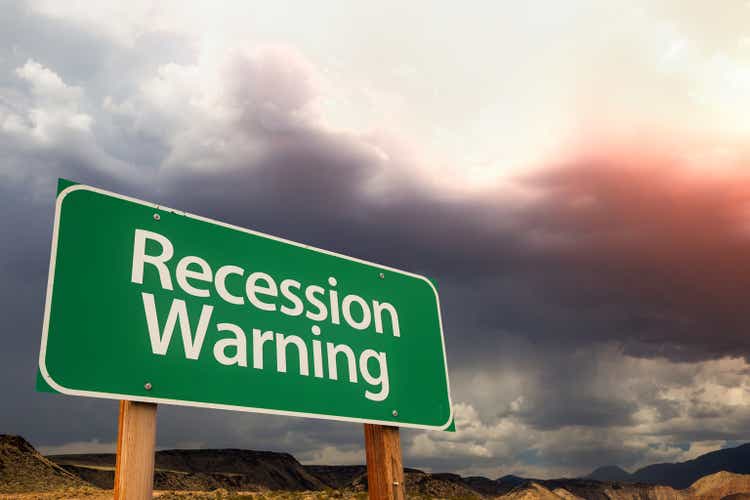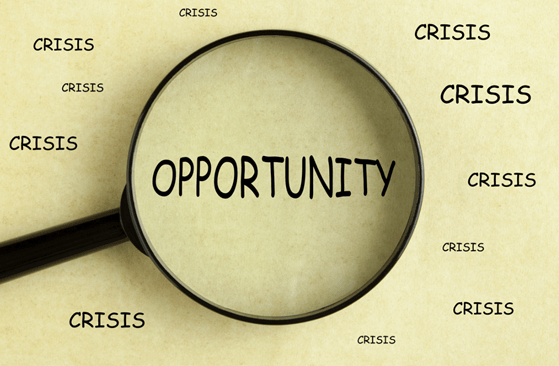Feverpitched
Co-produced with Treading Softly and Beyond Saving
Have you ever felt like you’re spinning around in circles, constantly putting out fires?
Little issues here, there, and everywhere. You deal with one, and without a moment to rest, something new crops up. For many of us, we waste countless hours putting out little fires instead of tackling the source of the issue.
When it comes to portfolio management, we can fall into this same trap. We react to the current events in the market without examining the larger causes and adjusting proactively instead of reactively.
Every week, we provide valuable insights to High Dividend Opportunities members about our market outlook in a holistic fashion. We also provide valuable portfolio updates, so members can adjust and benefit from our research.
Today I want to share portions of this weekly update for the public to get a taste as well as some valuable information.
This information was first shared with HDO members on September 18th, but it is still valuable today.
Recession in Europe
The evidence is mounting that much of Europe is either in a recession or going to be in a recession soon. Even as inflation is starting to tame a little in the U.S., it continues to spread throughout Europe. European governments are attempting to combat this by hiking interest rates, with the European Central Bank raising rates at a record pace.
Unfortunately, their efforts are not going to work. Europe’s main challenge right now is its lack of energy independence and its historical reliance on Russia and Ukraine. There is no amount of interest rate hiking that is going to solve their energy problems. For Europe, this is a situation that is eerily similar to what we saw in the U.S. in the 1970s. Stagflation appears to be inevitable for them.
It is very reasonable that there is some fear that a recession in Europe could spread to the U.S., however, from an energy standpoint, the U.S. is in a much better position. American consumers are strong and are more capable of absorbing higher energy costs, and the most impacted form of energy is natural gas, of which the U.S. has an abundance.
Several US-based companies are the big winners of Europe’s energy shortage, specifically companies like Antero Midstream (AM)/Antero Resources (AR) and Enterprise Products Partners (EPD).
A recession in Europe will also reduce global demand, which will help inflation in the U.S., and it has led to a stronger dollar which reduces the cost of imports and again is beneficial for U.S. inflation.
For U.S. investors, it also is opening up investment opportunities. With the economy in Europe weakening and the U.S. dollars strengthening, it is a great time for U.S. investors to consider starting to invest in Europe.
A holding in the HDO portfolio that stands to benefit from this is W. P. Carey Inc. (WPC), which has a significant real estate presence in Europe and has the ability to expand, leveraging a strong U.S. dollar to increase its market share in Europe.
I believe it is still too early to “back up the truck” on European investments. But as a recession is confirmed and the European markets look like they have bottomed, we will consider some CEFs with more foreign exposure.
PIMCO also has some foreign debt. As they start seeing international opportunities to take advantage of a strong U.S. dollar, I expect we will see an increase in foreign holdings in funds such as PIMCO Corporate & Income Opportunity (PTY). This is one of the things I love about investing in PIMCO closed-end funds (“CEFs”). They have an excellent management team that has proven in the past to be very savvy and identify opportunities and buy into them at the right times. This removes the burden from me trying to figure out when European bonds might be hitting bottom. I can gain exposure to this particular opportunity through PIMCO without having to focus on the European debt markets daily.
Will the U.S. enter recession?
For the U.S., I continue to believe that recession is most likely a late 2023 or early 2024 risk. The job market remains quite strong, and there are plenty of pockets of strength in the U.S. economy. While there are some areas of weakness, as always, the strengths currently outweigh the weaknesses.
However, we see mounting evidence of companies slowing down or even cutting back. If the Fed continues hiking at its current pace in this environment, it will encourage companies to cut back even more drastically. Eventually, that will lead to a recession, complete with high unemployment and falling demand.
A key indicator we will watch at HDO is the 10-year/3-month Treasury spread. There is a strong possibility that the yield curve inverts and that spread turns negative. That would be a strong indication that the economy is on track for a recession in late 2023.
How should you prepare your portfolio for a recession?
A common question I receive is which holding investors should sell if there is a recession. Investors are often in a hurry to reposition their portfolio when they believe that something will happen.
To be clear, our base case at HDO is that there will be a recession starting in late 2023. However, the funny thing about predicting the future is that the future often does not cooperate. When you are in the business of predicting the future, you will be wrong, and you will be wrong frequently.
As investors, we should never position our portfolios in a way that relies on us being 100% accurate at predicting the future. Taking all of your money, placing it on one big bet, and being right is a great way to beat the market in the short term. But it can be devastating when you are wrong. More money is lost by investors preparing for a recession or a bear market than is lost holding through these events.
I believe where most investors go wrong is that they are trying to get “the most money.” This is an unhealthy and dangerous goal for an investor to have. Those who make the most money over a short period are usually those who took the greatest risks. A great risk looks genius if you are right, but it is devastating if you are wrong.
Everyone who is investing has different goals, yet for most of us, these goals are very similar. For most of us, we are investing to ensure that we have funds for our retirement. What is more important in your retirement: ensuring that you have enough no matter what happens, or trying to have the most at the risk of losing it all?
It isn’t about having the highest score. You worked hard for your money, you do not want to gamble your entire future. Investing and portfolio management is about ensuring you have what you need, regardless of what happens.
So when preparing your portfolio for a recession or any other macro event that you believe is likely, you do not want to make big drastic changes or put all of your money into the same few stocks or sectors. You want to continue to maintain a diversified approach so that you have exposure to picks that will do well in a recession as well as exposure to picks that will do well if you are wrong and recession is avoided.
Investing in utilities is an excellent means of gaining great income in good times and bad. Utilities provide a necessary service and consumers are exceptionally unlike to leave those bills unpaid as they provide the basic necessities of life in our western culture.
Furthermore, fixed income continues to be hit hard by inflation and rate hikes – a one-two punch combo for long-duration investments like perpetual preferreds and long-dated bonds. However, many investors remember that preferreds and bonds provided stable and steady income in the midst of the COVID-19 market dips and drops. Fixed income investors benefit from being higher up the capital stack. As rates climb, these investments are getting cheaper, making them more attractive to lock in great rates for years, or even decades to come. When the Fed turns more dovish in the future, which inevitably they will, these same investments will provide large positive returns as their intermediate trading value climbs.
iStock
Conclusion
Recession in Europe?! Recession in the United States?! What can investors do? Be prepared now. However, we shouldn’t put all our eggs into one basket. As has been famously said by Peter Lynch:
Far More Money Has Been Lost By Investors Trying To Time Corrections Than In All Corrections Combined.
We aim to create a portfolio that can benefit from a recession but also benefit if one does not come. We aim to be overwhelmingly agnostic to uncontrollable market events when viewed on a long horizon.
Do we adjust our portfolio as needed? Definitely. We actively manage our Model Portfolio and provide updates to High Dividend Opportunities members, but you can create an outstanding income portfolio on your own as well.
Holding utilities and fixed income are two ways to help insulate your portfolio from unexpected disappointments during a recession but also to benefit if they arrive as others flock to safer waters. If a recession never comes, you still win as income pours in from your holdings.
That sounds like a low-stress retirement dream plan. That’s the beauty of our Income Method.


Be the first to comment